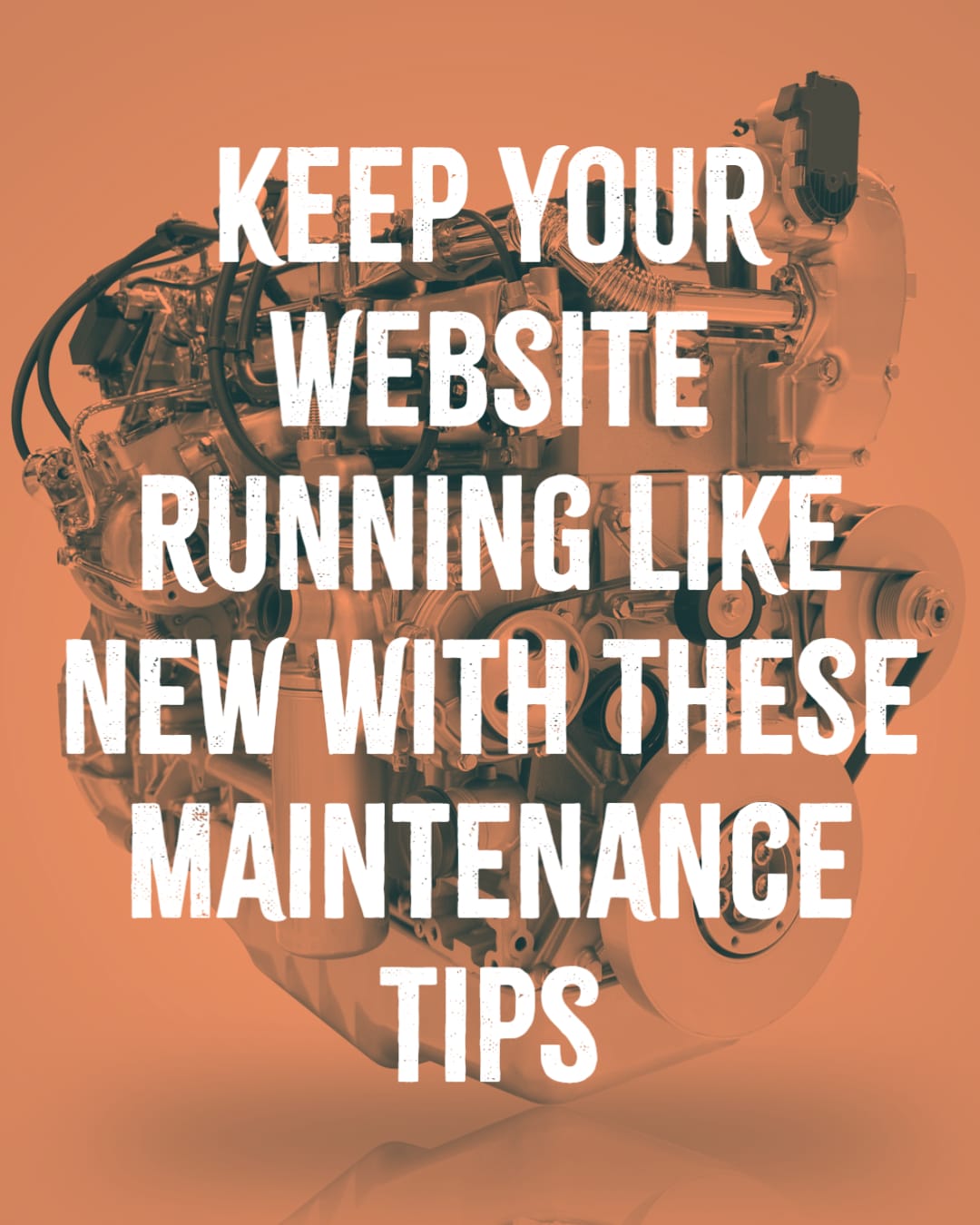
Maintaining your website is a crucial part of keeping it running like new. If you don’t maintain it regularly, your website can become sluggish and full of errors (not to mention, unsecure and vulnerable to attack).
Here are some tips for keeping your website in tip-top shape:
Test For Broken Links & Errors
Today’s websites are more complex than ever before. This means there are plenty of opportunities for broken links, coding errors, and user experience mistakes to slip in. Regularly check your website for these issues using tools like Google Search Console or Screaming Frog SEO Spider.
Backup Your Site & Database
If something goes wrong with your website or hosting, you could lose all of your data and changes. Make sure to create regular backups of both your website files and databases, so that if disaster strikes, you can quickly get back up and running.
Update Your CMS & Plugins
The WordPress platform is constantly being updated with new features, security patches and bug fixes. Make sure to keep your CMS and plugins up-to-date to take advantage of all the latest improvements.
Monitor Your Website’s Performance
Checking on how your website is performing regularly can help you identify performance issues before they become a major problem. Use tools like Google Analytics or Load Impact to get an idea of how users are interacting with your site, and diagnose any performance issues.
Monitor Website Traffic
Monitoring your website traffic is important for understanding how people are engaging with your site and where they’re coming from. Use tools like Google Analytics to track the number of unique visitors, page views, bounce rate and other metrics. This can help you make adjustments that will improve user engagement.
Test Your Forms
Forms are an important part of any website, but they can easily break if not properly maintained. Test your forms regularly to make sure that the data is being sent and received properly. That includes making sure that the correct data is being sent, any validation rules are working correctly, and that the response messages are accurate.
View Your Website On Multiple Devices and Screen Sizes
It’s important to make sure your website works correctly on all devices and screen sizes. Test your website on mobile phones, tablets, and desktops to ensure that it looks and functions correctly across different platforms. Keep an eye out for any design or usability issues as well.
Optimize Images & Resources
Large images and other resources can significantly slow down your website. Make sure to optimize all of your images before uploading them, as well as any other resources like CSS and JavaScript files. This can help your website load faster, improving user experience and overall performance.
Remove Unused Plugins & Themes
Keeping your website free of unused plugins and themes is important for security and performance. Unused plugins can create vulnerabilities that could be exploited by hackers, as well as slow down your website’s performance. Delete any unused plugins or themes to keep your website secure and running quickly.
Clean Your Website Code
Over time, your website’s code can become cluttered with old elements and unnecessary lines. Regularly clean up your code by removing any unused elements or redundant code to help keep your website running smoothly. This also helps keep the loading times down and makes it easier for search engines to crawl and index your pages.
Optimize Your Site For Search Engines
Search engine optimization (SEO) can help your website appear higher in search engine rankings, and attract more visitors. Use tools like Google Search Console to track your keyword ranks, and make sure your content is optimized for SEO.
Secure Your Website
Since hackers are constantly looking for weaknesses to exploit, make sure you’re always taking steps to secure your website from attacks. Use a strong password for all your accounts, and keep up with the latest security patches for all your plugins and themes to stay one step ahead of malicious actors.
Test the Speed & Performance of Your Website
The speed and performance of your website will have a major impact on user engagement. Use tools like GT Metrix or Pingdom to test how quickly your website is loading, and identify any areas you can improve to boost performance.
Conduct Regular Security Checks
These days, there are plenty of security scanners and malware detection tools that can help you identify any possible weaknesses in your website. Install a scanner on your site to conduct regular checks for vulnerabilities and malicious code.
Continually Update Your Content
Content is an essential part of any website, and it needs to be updated regularly in order to keep visitors engaged. Create a regular schedule for adding fresh content to your site and updating existing content. This can help improve user engagement and enhance SEO performance.
Check Your Website’s Accessibility
By making sure that your website is accessible to people with disabilities, you can improve user experience and stay compliant with government regulations. Use tools like WAVE or Siteimprove to check for any accessibility issues on your website.
Check Your Website Rankings
Make sure your website is consistently ranking well in search engine results pages (SERPs). Use tools like Google Search Console to track your rankings and make any adjustments necessary to improve visibility. This can help attract more organic traffic to your site.
Create a Maintenance Plan
Having a regular maintenance plan in place will help ensure that all of the above tasks are completed on a regular basis. This will help keep your website secure, performing well, and up-to-date with the latest content. A good maintenance plan should also include regular backups of all your data in case anything goes wrong.
In summary, keeping your website running smoothly doesn’t have to be a chore. Simple tips such as ensuring your content and images are up to date, doing regular checks for errors and broken links, optimizing the search engine rankings of your website, and making sure everything is secure can all help keep your website running like new. Additionally, you may also want to enlist the services of professionals who are well versed in web design or management to ensure that everything is running correctly. Don’t forget that prevention is the best form of maintenance when it comes to websites, so make sure you take steps now to ensure success in the future. If you’re having trouble managing and maintaining your website on your own, then don’t hesitate to contact us at Graticle. We have a team of experts who can help you optimize and maintain your website so it runs like new again.
Contact us today for more information about our services! You can also reach us by phone or text (360) 450-3711





